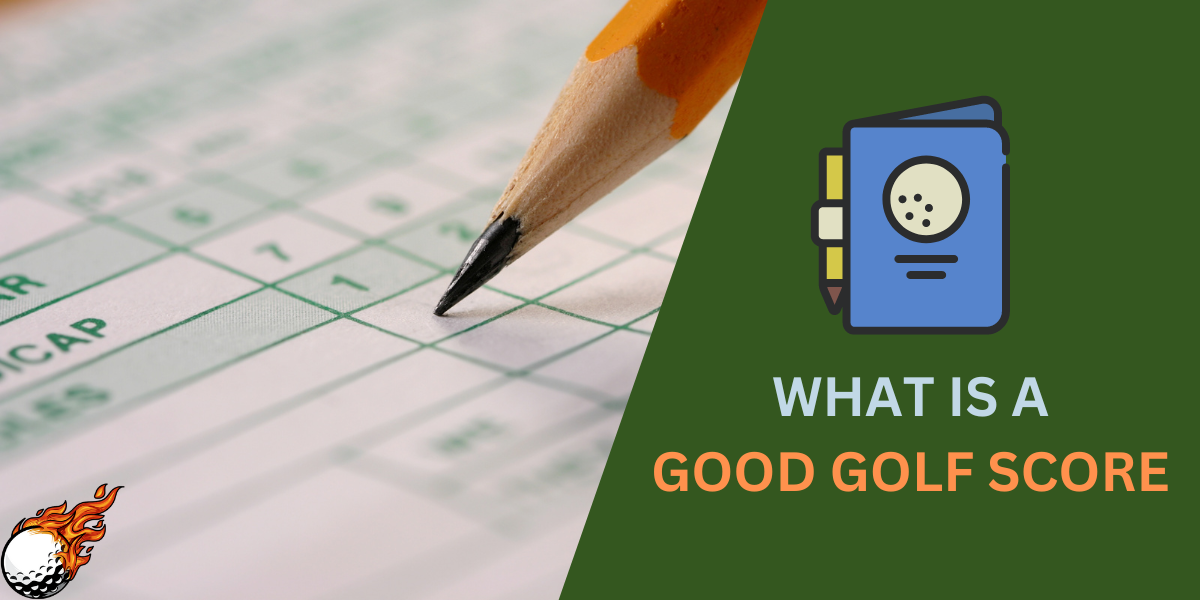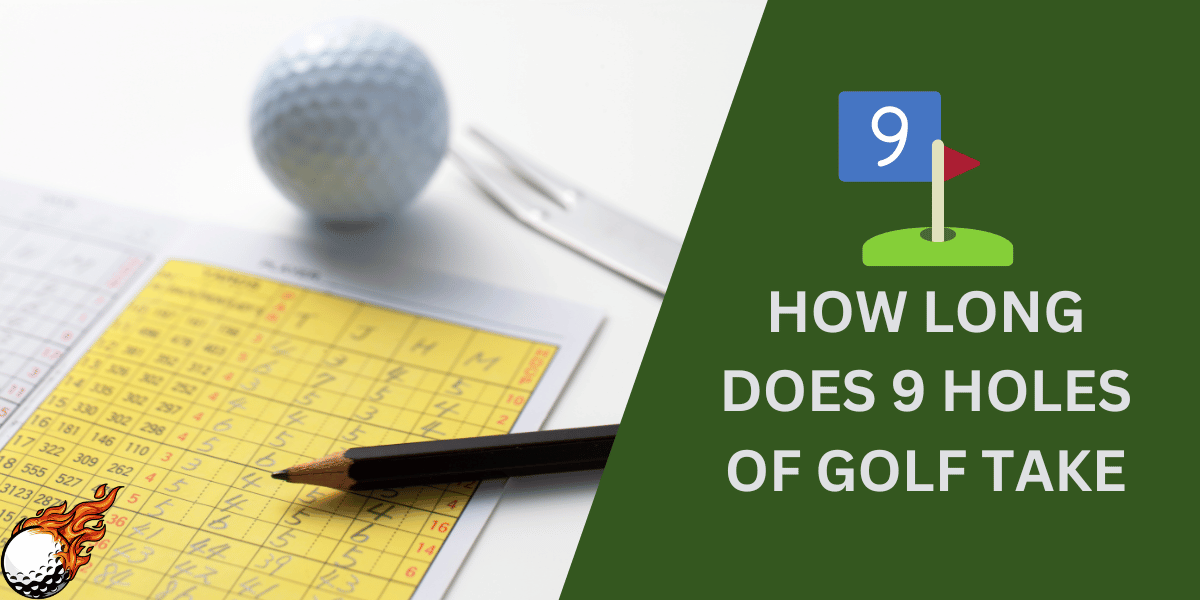
Have you ever wondered how many whacks it should take to get that little white golf ball in the hole on a golf course? Well, that’s where par comes in!
Golf courses are full of numbers and signs that can be confusing.
Understanding “par” is super important if you want to know if you’re playing well or not.
This blog post will explain par and help you figure out how it works on the entire golf course.
You’ll walk away knowing if that last golf hole was good, bad, or just okay!
Par is the “perfect” number of strokes a skilled golfer should take to complete a hole.
It’s used to track performance on individual holes and the entire Course.
Knowing the par helps you choose the right clubs, figure out your golfing strengths and weaknesses, and make the game more fun!
Defining Par
What is it?
Think of par as the perfect score for playing each hole on a golf course.
It’s the number of strokes a good golfer should take to get the ball in the hole.
So, if a hole is marked “Par 4”, a good player should get their ball into the hole after four swings of their golf club.
Significance:
Par is like your target on each hole.
Knowing the par helps you set goals and figure out how well you’re playing.
Plus, the pars of all the individual golf holes on a course are added up to get the total par for that entire Course. It’s the benchmark for the whole golfing experience!
Why does par vary?
Most golf courses have a mixture of different par holes.
You’ll see some that are par 3, others that are par 4, and sometimes even a few par 5s.
The main thing that makes a hole get a different par is how long it is. And a little bit depends on how tricky the hole is to play.
Golf Scoring Explained
Each hole’s par helps us use fun, easy-to-understand terms in golf:
- Birdie: One stroke under the hole’s par
- Eagle: Two strokes under par
- Double Eagle: (Super rare!) Three strokes under par
- Bogey: One stroke over par
- Double bogey: Two strokes over par
- Triple bogey: Get the picture?
Remember, a good golfer, what we sometimes call a “scratch golfer,” aims for about even par on most golf courses.
Recreational golfers often find that’s a tough goal, and that’s okay!
Understanding par is the first step to improving how you play.
Types of Par in Golf
Let’s break down the most common parts you’ll find on a golf course. Understanding these will really help you when looking at a scorecard and picking the right club for your first shot!

Par 3
- These holes are meant to be reached with a single shot from the tee. Think of them as the “short par” holes!
- Even an expert golfer needs to be accurate on their tee shot for a chance to make par.
- For the average golfer, getting on the green with the first shot here is a good result.
Par 4
- This is probably the most common par score you’ll see.
- A good golfer should hit a longer tee shot and then have a shorter shot left to reach the green.
- Getting the ball in the hole in four strokes here is solid golf!
Par 5
- These are long! It normally takes a golfer to hit three good shots to reach the green on a par five-hole.
- Professional golfers sometimes try to hit the green with their second shot if they’ve hit a big tee shot.
- Most recreational golfers are happy to take five strokes on these longer holes.
A Note on Difficulty:
Not all holes with the same par are equal! Some par 4s might be harder than others! This is because of:
- Distance: A longer hole is naturally more difficult.
- Obstacles: Water, sand bunkers, and trees get in the way!
- Terrain: Uphill holes are way harder than downhill ones

Golf Scoring Terms
Knowing par helps us understand all those fancy golf terms. Remember:
- Hole in one: Super lucky shot! This is the best score possible on any given hole.
- Birdies, eagles, etc.: These tell you how many strokes under par a golfer hits on a specific hole.
- Bogeys (and beyond): These show how many strokes over par a golfer hits on a particular hole.
Think of par as the heart of the whole golf scoring system. Without it, we couldn’t measure how well anyone, even a golf expert, is playing!
Par as a Scoring Tool
Par isn’t just about how you do on an individual golf hole– it’s a way to measure your overall performance on the Course. Here’s how it works:
Scoring Lingo
We already covered some terms, but a quick refresher:
- Birdie: One stroke under par on a single hole.
- Eagle: Two strokes under par…getting better!
- Bogey: One over par. It’s still not bad for most golfers.
- Double Bogey, Triple Bogey, etc.The further over par you go, the worse (but it happens to everyone sometimes!)
Course Par
Every golf course has a total par. This is calculated by adding up the par scores of all the individual holes. A typical course par is around 72.
Your Score vs. Course Par
- Under par: Great job! You took fewer strokes than the “ideal” score for the Course.
- Over par: It happens to everyone. Use this info to see what parts of your game to work on.
- Even par: Playing at this level is a real achievement for most golfers!
Other notes about par and scoring

- Holes in one: These are incredibly rare, even for expert golfers, but they do count!
- Tournament scoring: Pros play multiple rounds. Their overall score is listed as “under par” or “over par” compared to the total par for the Course.
- Stroke play vs. Medal play These are different types of golf competitions, but both use par-related scoring.
- Remember: Par is also related to course design–think distance, hazards, etc.- but that’s a bit complex for today!
Think of par as your roadmap! It helps you track your progress on each hole, see how you did for the entire round, and decide how to improve your short game in the future.
Once you understand it, golf gets more fun, and it’s easier to move on to the next hole after a quadruple bogey or… worse (a quintuple bogey? Yikes!).
Factors Affecting Par on Golf Holes
You might think par is only about how far it is from the tee to the hole – but there’s WAY more to it!
Here’s why holes with the same distance could have different par scores:
Distance: The Main Factor
Yes, a hole’s length has the biggest impact on its par. Longer holes are generally par 5s, while super short ones are par 3s. There are even special guidelines about what distances should be for different parts.
Obstacles: Trouble in Your Way
- Water: Ponds and creeks in the fairway make a hole harder! You have to play smarter, and a bad shot can be harder to recover from.
- Bunkers: Big areas of sand are meant to catch your ball. It’s harder to get a good shot out of sand, so bunkers make par harder to achieve.
- Trees: A narrow fairway lined with trees makes accuracy super important – tough for most golfers!
- Terrain: Hills and Slopes
- Uphill holes always play longer and are harder! Even the slope of the putting green matters.
- The “Unseen” Factor: Course RatingThis gets a bit complex, but golf courses have “ratings” that make a hole tougher than just the distance-based par. This has to do with how hard the Course is for an average golfer, not just a pro. Think of executive courses: they often have lower pars because they’re easier overall.
Why It Matters
Understanding what goes into setting par means you get a better idea of how a hole is intended to be played.
It can help you choose the right club and make smarter decisions for a better golfer’s score!
And remember, even a “bogey” on a really difficult hole can be a good result.
Why Understanding Par Matters
Okay, so now you know what par means…but why does it matter for YOU out on the Course?
- Smarter Course StrategyKnowing the par helps you make the right call! On a par 5, maybe you’ll decide to be less risky with that second shot and avoid trouble. On a par 3, you might go for the green right from the tee box!
- Tracking Your ProgressPar gives you a target. If you usually shoot double bogey on par four holes, you know your long game needs work. Are you getting too many bogeys on par 3s? Time to practice your short game!
- More Fun!Understanding how a golf course is designed and why holes have certain pars adds a whole new layer to the game. Instead of feeling frustrated after a bad hole, you start thinking like a course architect.

Par = Your Golfing Yardstick
Think of par as a way to measure your performance on each hole and the Course as a whole. It helps you:
- Get better at picking the right clubs.
- Identify what parts of your game need practice.
- Appreciate the challenges and fun of golf course design.
Remember, even the best golfers sometimes have awful holes. Understanding par is the first step to improving your golf scores and having more fun on the Course!
Conclusion
So, par isn’t as mysterious as you might have thought, right?
It’s all about that ideal number of shots on each hole.
Whether you’re playing a long par five or a tricky par 3, knowing the par helps you make smarter decisions.
Now that you understand par, take a closer look at the scorecard before your next round.
Analyze the pars of each hole and think about how that should affect your strategy.
Did you find this information helpful?
If so, maybe you’d like to learn more about how course design and ratings are calculated – it’s even more in-depth than what we’ve covered here!
Either way, happy golfing!
Frequently Asked Questions
What happens if I get the ball in the hole in fewer strokes than par?
That’s awesome! You scored below par. If it’s one stroke under, it’s a birdie; two strokes under is an eagle, and so on!
What if I take more strokes than par?
That’s okay; it happens! If you take one extra stroke, it’s a bogey; two extra is a double bogey, and it keeps going from there.
Do all golf courses have the same par?
Nope! Most courses have a par around 72, but it can vary depending on the difficulty and length of the Course.
Is getting “par” on a hole considered good?
Yes! Par means you played the hole as it was designed to be played. Many golfers are happy to get a bogey (one over par) on harder holes.
Can a hole have a par higher than 5?
Yes, but it’s incredibly rare! There are a few super-long par six holes out there, which are a real challenge even for professional golfers.













